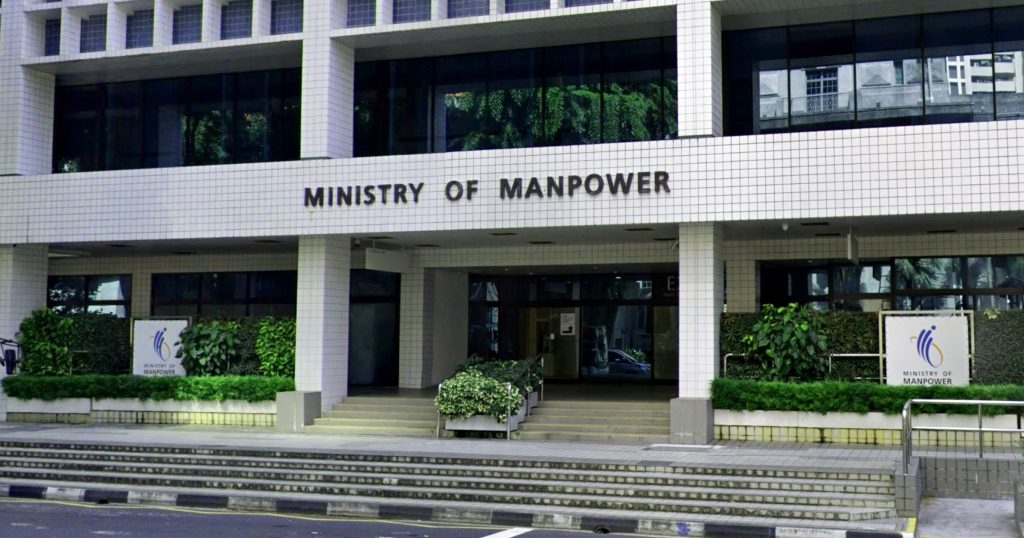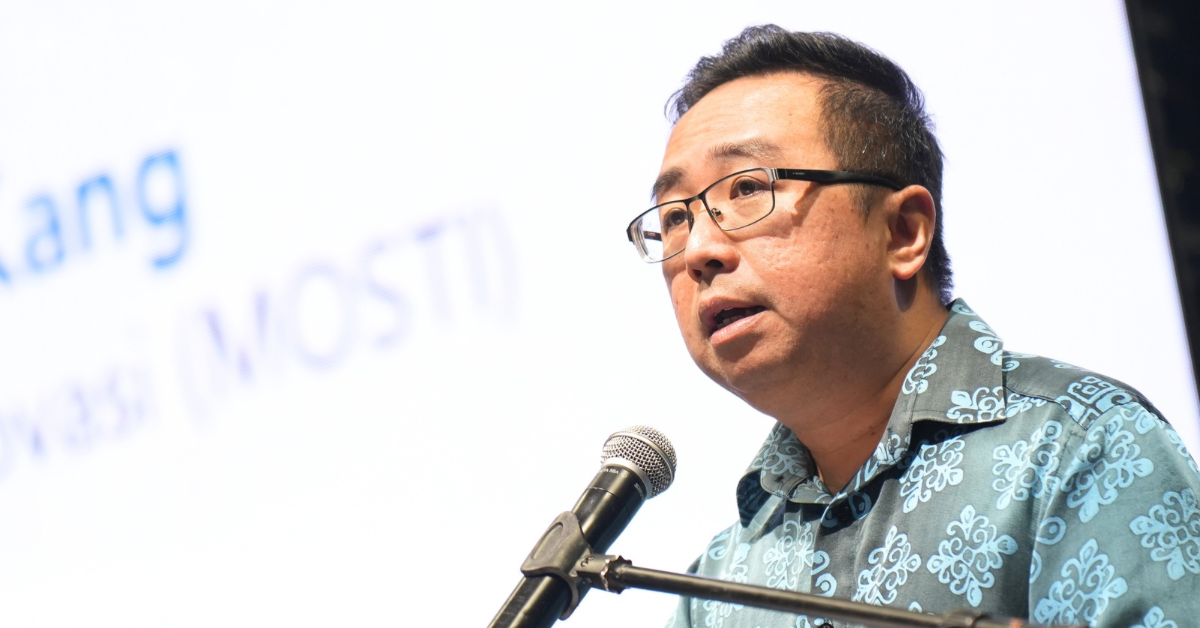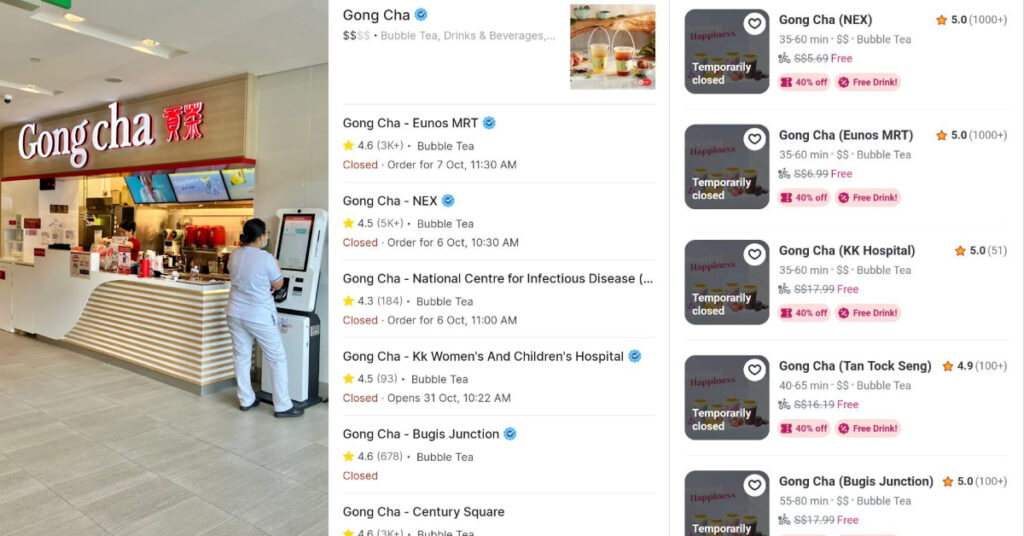Disclaimer: Unless otherwise stated, any opinions expressed below belong solely to the author.
In a previous article I extracted a list of professions with the highest number of vacancies, listed in Ministry of Manpower’s most recent Labour Market Report. But the document itself provides more insights into the evolution of the job market in Singapore—and how it has improved over the years.
By virtually every measure (bar one), Singaporeans are enjoying the best, most stable and, in some ways, least demanding employment conditions on record. Don’t take my word for it, just look at the numbers.
The basics
Let’s start with the basic figures—unemployment data. The figures are down below 3 per cent for all demographic groups, and in line with long-term averages. In fact, over time they do show a slight downward trend, although at this rate the difference is negligible.
In practice, there’s no unemployment in Singapore to speak of, and most of those who are out of a job are simply in the process of transitioning from one to another (giving the statistic the name of “natural unemployment”).
Of course, there may be a group struggling to find a suitable employer but, fortunately, they are a very small minority.
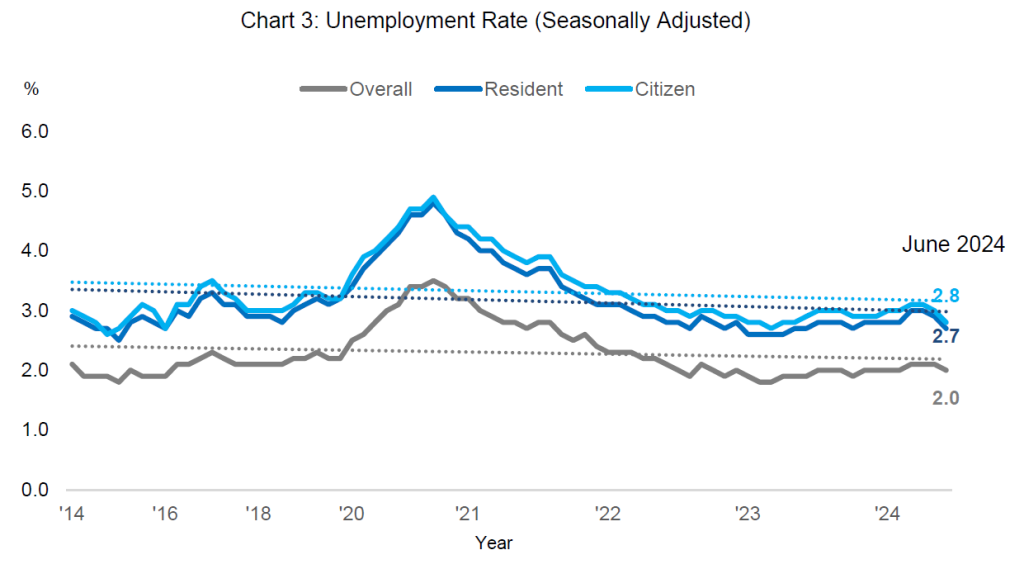
That minority is captured the long-term unemployment rate—i.e. the number of people who stay out of a job for more than six months. One could say that this is the “real” unemployment rate, as it usually takes a few months to secure new employment and those who were temporarily out of work weren’t really unemployed.
Fortunately those who fail at it amount to just 0.8 per cent of the labour force.
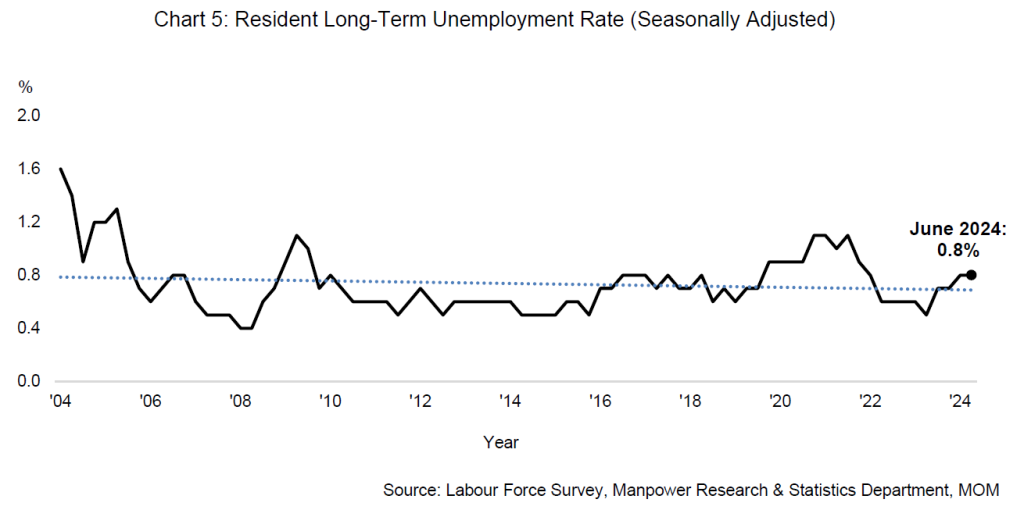
Growing stability
The most visible change in the local labour market is how much more stable it has become over time, despite many changes to global economy which have long suggested the opposite.
We were often told in the past that we have to embrace frequent job hopping, unexpected layoffs and updating our skills to stay relevant to employers, as the needs of modern jobs were evolving faster than ever.
But the figures for Singapore seem to be showing something else, starting with retrenchments, which continue to decline in severity over time, both in absolute and relative numbers. Being laid off is less likely today than it was 20-25 years ago, and the averages keep slowly decreasing further, even though they are already at relatively low levels.
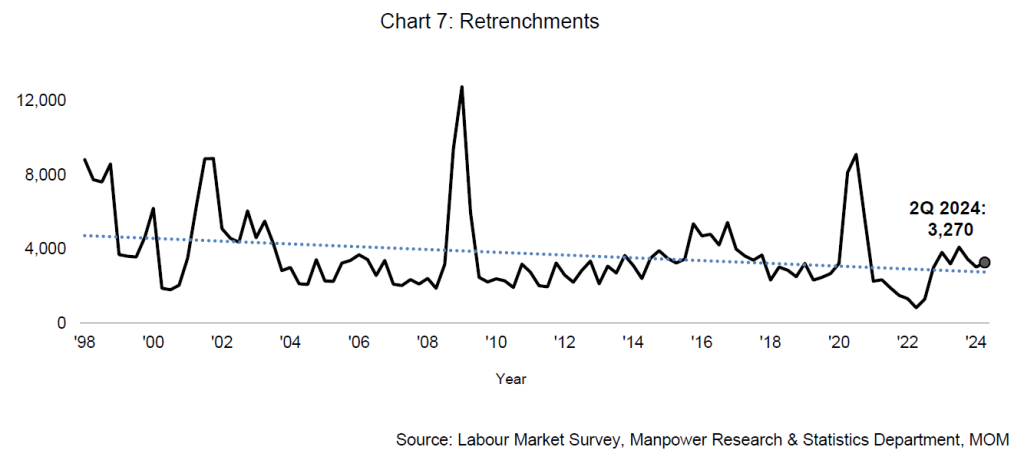
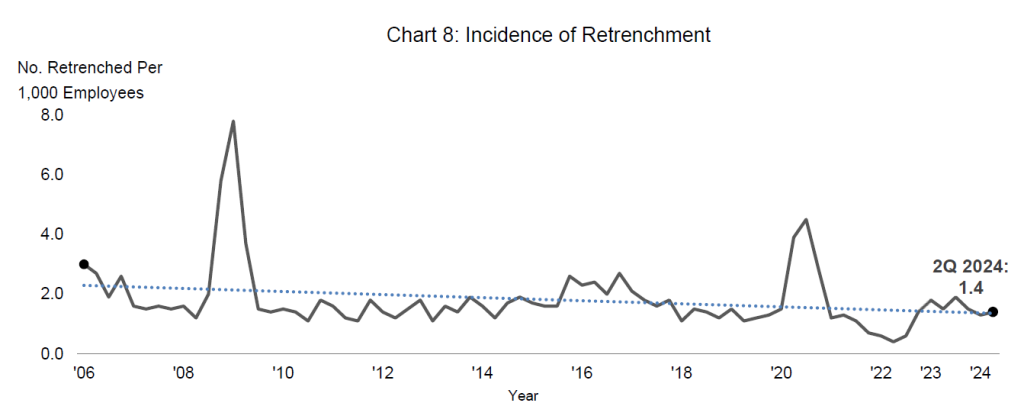
The only negative
As I hinted at the very beginning, there is one metric which has worsened over time—the rate of re-entry for retrenched resident (citizens and PR) workers, which has recently dropped to 55 per cent.
This is likely the flip-side of falling retrenchment rates.
That is, while it’s less likely for you to be made redundant, once you are it is harder to get back to work. It may also indicate that companies have gotten better at reducing headcounts by letting go of the people who really underperformed, which may explain their problems at returning to work in another place.
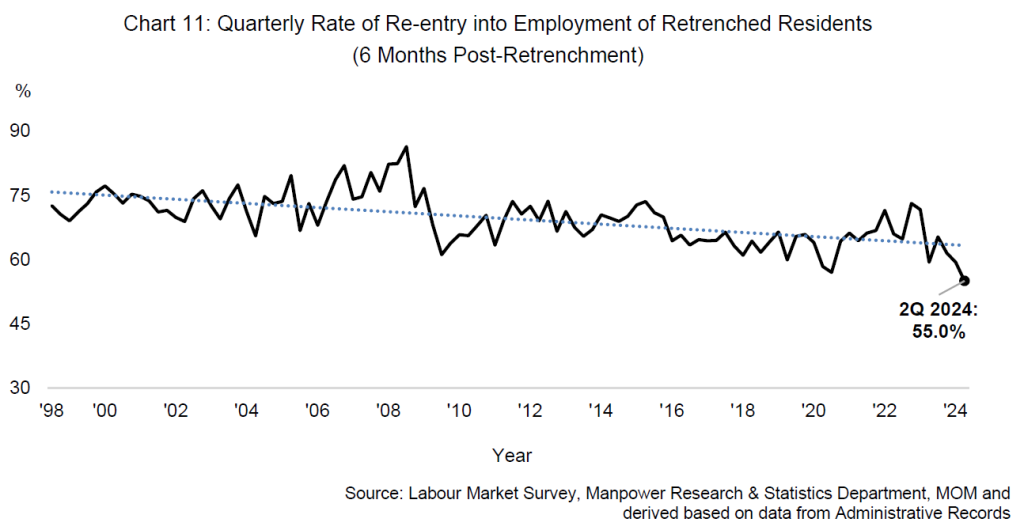
Nevertheless, these issues are only temporary, as more than 70 per cent are back in employment within 12 months. In other words, it’s not that it’s become impossible but it is more difficult.
And more positives
As I mentioned, however, this is the only indicator which has declined over time, so let’s return to the positives—like the available openings, which I covered in more detail in this article, last week.
The number of vacancies, both in absolute and relative numbers, has been going up over the past two decades. Currently there are over 80,000 jobs waiting to be filled, with 45,000 of them looking for qualified PMET candidates.
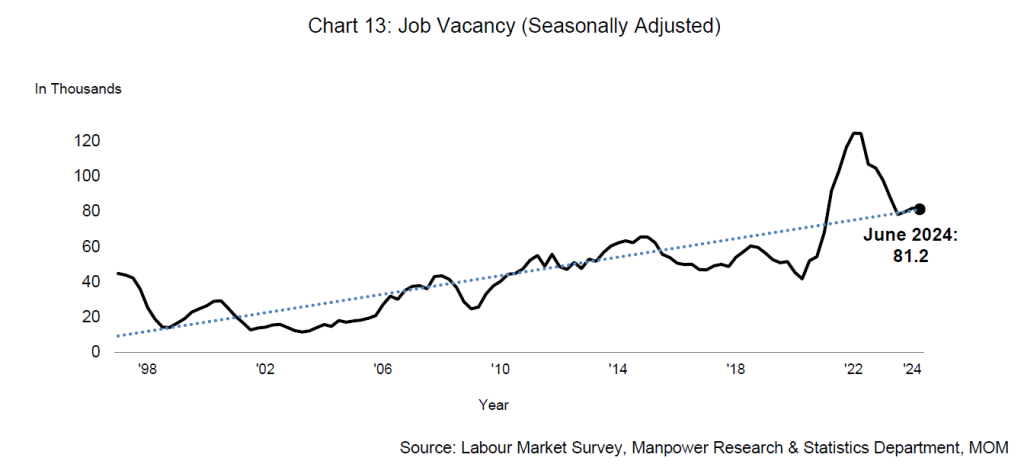
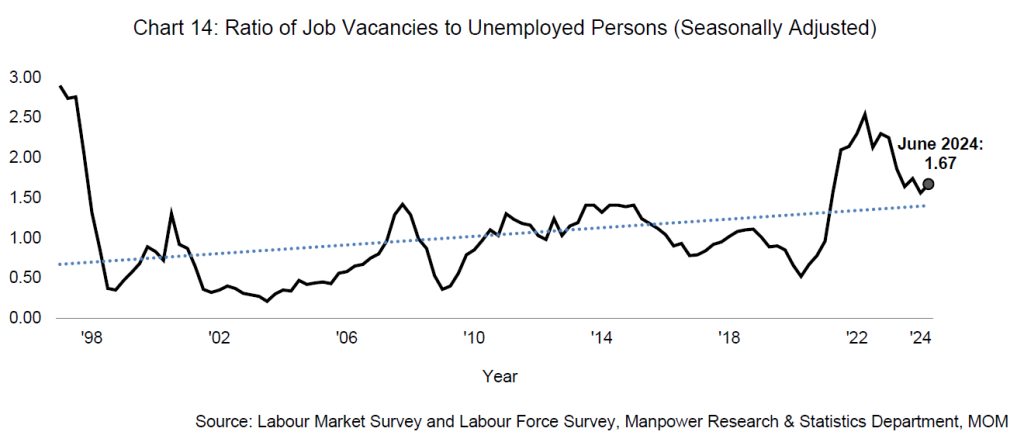
There are currently more than three vacancies available for every two unemployed people, showing that if there’s any problem for those who are unemployed, it’s not the lack of opportunities but rather a mismatch between their skills and the needs of the market.
But a large number of open positions also means it’s easier for those currently employed to shop around for a better offer somewhere and switch employers for improved working conditions and higher pay.
Given the ongoing shortage of talent, it’s clear that Singapore remains an employee’s market, as qualified people are in short supply.
That said, it seems that Singaporeans are increasingly happy with where they are, since the turnover has been consistently trending down, with resignation rates hitting historic lows this year, reducing the need for recruitment as well.
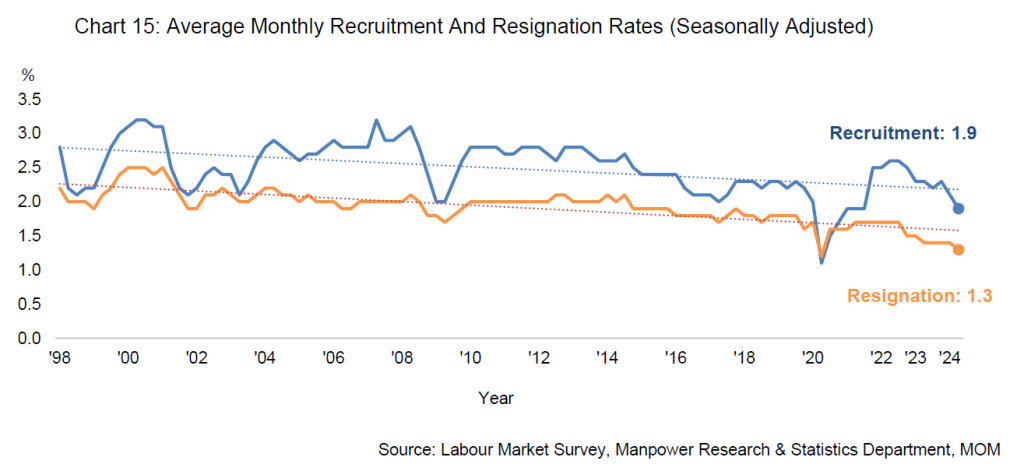
This is important for both employees and employers, as any change in headcount is inherently disruptive to business, whether it is forced to lay people off or they resign of their own will, leaving gaps that need to be filled.
One of the reasons Singaporeans may be less eager to jump ship is the overall decline in hours worked, from around 47 to just over 43 hours, on average, in the past 25 years.
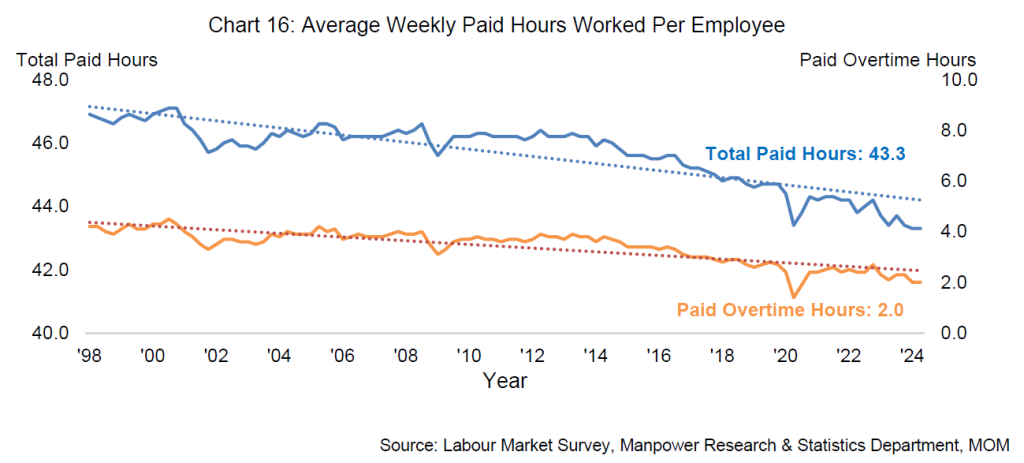
This leaves people with 150 to 200 hours more every year, reducing burnout and, clearly, improving talent retention, as a growing number of us want to lead more balanced lives.
As you can see, then, slowly but surely, Singapore’s job market standards have improved, with people being burdened with less work, enjoying greater stability of employment, lower risk of retrenchment and, should the worst happen, reduced incidence of long-term joblessness.
And while some still like to grumble a bit, it’s clear that the situation has never been better, even if there is still space for improvement.
Featured Image Credit: Google Street View


